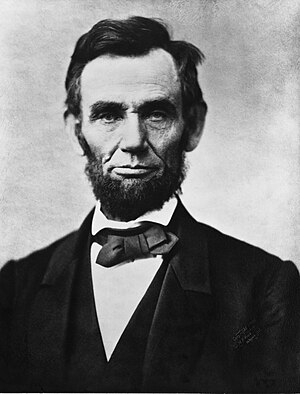Although the Common Core State Standards (CCSS) are rife with suggested texts and text types, there are several parenthetical remarks within the grade-specific reading standards that aren't examples; they are to be included.
Required titles
RI.11-12.9 — that is, the ninth standard within the Reading Informational texts strand for grades 11 and 12 — is an example of what I'm talking about:
Analyze seventeenth-, eighteenth-, and nineteenth-century foundational U.S. documents of historical and literary significance (including The Declaration of Independence, the Preamble to the Constitution, the Bill of Rights, and Lincoln’s Second Inaugural Address) for their themes, purposes, and rhetorical features.
The language of RI.11-12.9 makes it clear that, under the CCSS, all students are expected to analyze four documents listed at some point during their last two years of high school.
Required text types
In other grade-specific standards, certain text types are required, but no specific titles are mentioned. For example, let's look at a standard that befuddles me a bit; below is the text of RL.11-12.9 — so that's the ninth standard within the Reading Literature strand for grades 11 and 12:
Demonstrate knowledge of eighteenth-, nineteenth- and early-twentieth-century foundational works of American literature, including how two or more texts from the same period treat similar themes or topics.
This stands out to me as pretty exceptionally vague. Although I think the vagueness is probably an attempt to leave as much choice as possible in the hands of teachers and local schools. But what is clear from RL.11-12.9 is that students pretty much need to take an American Lit class.
While we're on the topic of vague requirements, perhaps the second vaguest grade-specific standard is RL.9-10.6:
Analyze a particular point of view or cultural experience reflected in a work of literature from outside the United States, drawing on a wide reading of world literature.
Again, there's a lot of room for interpretation here.
Anyways, on to the list.
So what are the required texts and text types within the CCSS?
From my reading, the following list is complete; please note that I did not list any of the suggested titles or text types. I've also included the standards in which the listed texts are mentioned.
REQUIRED TITLES

- the Declaration of Independence (RI.11-12.9)
- the Preamble to the Constitution (RI.11-12.9)
- the Bill of Rights (RI.11-12.9)
- Lincoln's Second Inaugural Address (RI.11-12.9)
REQUIRED TEXT TYPES
- seminal documents in US history (RI.9-10.9, RI.11-12.8, 9)
- “a wide reading of world literature” (RL.9-10.6)
- at least one Shakespearean play (RL.11-12.4, 7)
- at least one play by an American dramatist (RL.11-12.7)
- “demonstrate knowledge of 18th, 19th, and early 20th century foundational works of American literature, including how two or more texts from the same period treat similar themes or topics.” (RL.11-12.9)
- fables and folktales from diverse cultures (RL.2.3, RL.3.3 — thank you to Renee for pointing these out!)
- myths from diverse cultures (RL.3.3 — again, thank you Renee!)
That's it! If I've missed something, please let me know. As far as I can tell, these are the only required reading within the entirety of the CCSS.
Kim says
No British lit.
davestuartjr says
True, Kim — except for one play by your boy Bill, there’s no Brit Lit. However, that’s pretty typical for the CCSS — they seek to leave as much room for local determination as possible.
Maureen says
Are the “seminal documents” the above required titles? And, am I to understand that we can go ahead a choose any part of these?
davestuartjr says
Hi Maureen,
Good questions and my bad on the delayed response! Yes, the seminal documents are the above 4 required titles. I believe the spirit of the standards would point to reading those in their entirety, especially since they are not terribly long. Keep in mind that those are all in the 11th-12th grade band of grade-specific standards.
Thanks for reaching out, Maureen — cheers!
Maureen Mead says
Thank you!
Martha Craine Ed.D says
Under informational text in grades 9-10 they are required to have read Analyze seminal U.S. documents of historical and literary significance (e.g., Washington’s Farewell Address, the Gettysburg Address, Roosevelt’s Four Freedoms speech, King’s “Letter from Birmingham Jail”), including how they address related themes and concepts.
Sarah says
The standard actually states, “e.g.,” not “i.e.” which would imply the requirement of these specific titles. Because of the “e.g.,” these titles are considered suggested talks, not required texts.
Jeannie says
The Bluest Eye… this book has rape, incest, molestation and a father that has an affair in it.. This is just way too much!
Jeannie says
Maybe this comment is out of place in this section, but I found it important enough to look into thanks Jeannie……..Bluest Eye
Novel
The Bluest Eye
Amazon 5/5
Barnes and Noble 4.1/5
The Bluest Eye is a 1970 novel by American author Toni Morrison. It is Morrison’s first novel and was written while she was teaching at Howard University and raising her two sons on her own. The story is about a year in the life of a young black girl named Pecola who develops an inferiority complex due to her eye color and skin appearance. It is set in Lorain, Ohio, against the backdrop of America’s Midwest during the years following the Great Depression. The point of view switches between the perspective of Claudia MacTeer, as a child and as an adult, and a third-person omniscient viewpoint. Because of the controversial nature of the book, which deals with racism, incest, and child molestation, there have been numerous attempts to ban it from schools and libraries.
Text under CC-BY-SA license
.
Wikipedia
Author: Toni Morrison
First published: 1970
Genres: Fiction · Novel
Characters: Pauline Breedlove · Sam Breedlove · Cholly Breedlove · Pecola Breedlove
Michael says
Contrary to your post, the CCSS do not require any particular texts at all.
davestuartjr says
Do you have a citation on that, Michael? I pulled straight from the standards for this post.